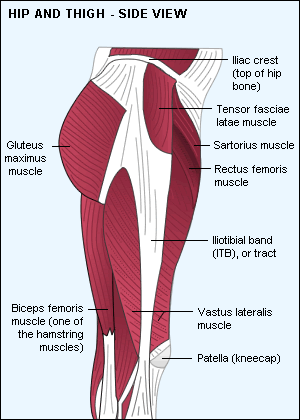This salt alternative could help reduce blood pressure. So why are so few people usingit?
What is ITB friction syndrome?
ITB friction syndrome (ITBFS) is inflammation of the iliotibial band (ITB) (the strong band of thick tissue that runs down the outside of the thigh) near the knee.
Symptoms of ITB friction syndrome
The syndrome is characterised by pain on the outside of the knee. In runners the pain on the side of the knee may be felt initially with running, but then may progress to be present between runs and when walking around. The knee pain is commonly felt when running downhill or when climbing stairs.
Causes
ITBFS is caused by excessive friction of the ITB against the outer bony portion of the femur (thighbone) at the knee. ITBFS is a fairly common problem among runners. Cyclists can also suffer from ITBFS although the mechanics are slightly different in cyclists. In cyclists, it is often associated with poor bike fit or set up. Some athletes are more likely to develop ITBFS than others. Factors that predispose a person are having a tight ITB, high weekly mileage (of running), walking or running around a track (versus running in a straight line), excessive foot and ankle pronation, poor and inappropriate or old footwear, and weakness of the hip abductors (the muscles that move the thighs away from the body at the hip).
Treatment of ITB friction syndrome
- Initial treatment may consist of regular application of ice and anti-inflammatory medicines to reduce inflammation.
- Activities must be modified to avoid repeated flexion and extension of the knee, such as caused by running or cycling.
- Massage, stretching and strengthening exercises (especially of the gluteus medius muscle) are very important parts of a treatment program.
- In severe cases corticosteroid injections or surgery to divide the ITB may be contemplated.
Related
ncG1vNJzZmilqZm%2Fb6%2FOpmWarV%2BovbC%2B06xkn6Gko7K0v46iq5tlo667pb7Oppxo
